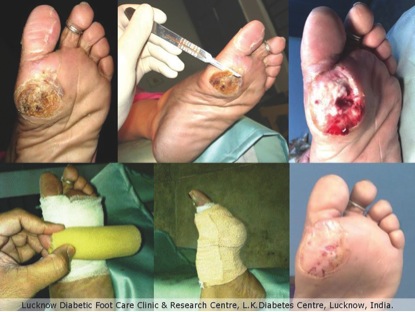woundsinternational
Just another WordPress.com site
These shoes are made for walking
I’ve always thought it is possible to measure a society’s slide into wealthy excess by the way it turns everyday items into luxuries. A stroll through one of the fashionable department stores in New York, Paris or Buenos Aires would reveal a host of examples — kitchen accessories that resemble hand-held modernist sculptures, food that takes longer to unpack than it would to hunt and wall-mounted fireplaces whose primary function is to look delightful rather than cast any heat.
Perhaps the most obvious example is the humble shoe. In the West, the female shoe in particular has developed from something that protects our feet to a fashion accessory, available in every imaginable colour and style and able to impart a heady mixture of sex appeal and social status.
As a man who has little interest in shoes (I have two types — brown and black), even I know that a Manolo Blahnik is not a complicated Russian vodka cocktail, but rather a world famous shoe designer whose creations fetch incredible sums. Is it me or does it seem that with an estimated 1.4 billion people around the world living in poverty, something has gone a little awry?
The one-dollar sandle
Of course in many countries around the world people often go barefoot and a simple pair of rubber flip-flops is a luxury. The same economic realities apply to healthcare equipment in general and wound care supplies in particular, with the majority of people in the world having little access to simple medicines, let alone sophisticated wound care treatment such as negative pressure, antimicrobial dressings or compression hosiery.
But as someone famous once said, ‘Necessity is the mother of invention,’ and harsh conditions can often forge innovative solutions such as the particularly ground-breaking answer to the problem of diabetic foot ulcers developed by a team of doctors in India.
The forefoot plantar region is the most common location of diabetic foot ulcers and offloading body weight to reduce pressure is vital in the management of these lesions. Offloading methods include crutch-assisted walking, therapeutic shoe and custom splints. However, due to economics, these methods are not often available in the developing world. To provide a simple method of offloading, the team developed the Samadhan System (the Hindi word ‘samadhan’ means ‘solution’), which uses a rolled up piece of foam, some adhesive and a piece of elastocrepe bandage. This is worn inside the patient’s sandals and offloads the weight of their body from the affected section of the foot.
The system costs around $1 per patient, does not require special training and can be adapted for people of different body weights, allowing them to walk with a relatively normal gait wearing buckled sandals.
This kind of innovation was particularly evident at the recent Wounds International conference in Cape Town, where speakers from different continents presented ways in which they had adapted available resources in the absence of expensive equipment, offering solutions that are both cheaper and effective. As David Keast, a Canadian wound care specialist from the World Alliance of Wound and Lymphoedema Care, said: ‘The conference has a different focus, with presentations from areas with limited resources, which we don’t usually see.’
Despite all of the expensive wound care treatments that have been developed recently and the plethora of research into the best way to manage certain types of wounds, developments like the $1 dollar sandal show that sometimes it is the simple things that actually work the best.
Or to use another cliché, if the shoe fits….
For more inforation, see:
Innovative approaches for improving diabetic foot care in India.

This is a testament to one of wound cares tenets ” it is not what you put ON a wound, but rather what you take OFF of it that allows it to heal” Nice article thanks for sharing 🙂
Follow me @iPodiatrist
Dear Dr Hochstein – thanks for reading the blog and your comment. We are trying to highlight wound care around the globe and the more people we can get involved the better. Thanks again for reading. Jason